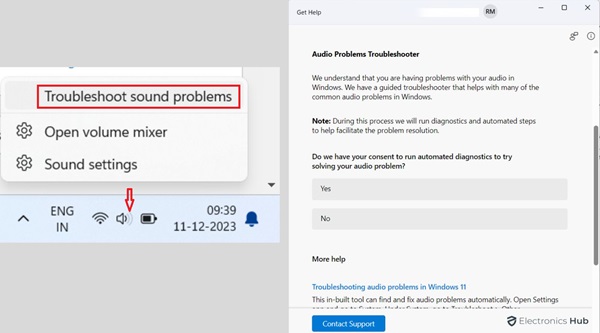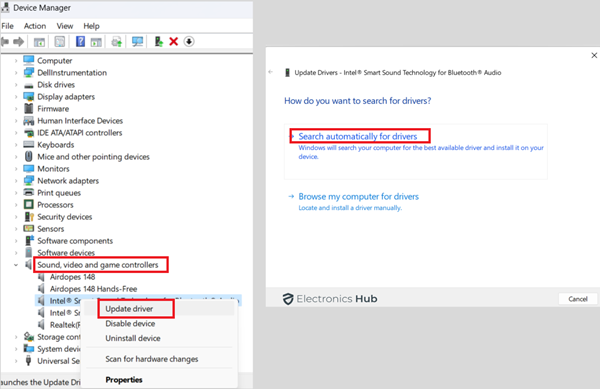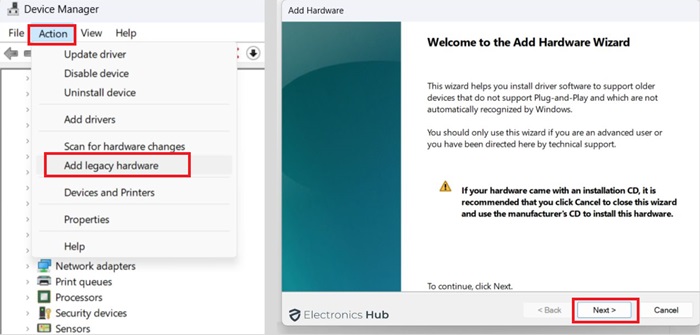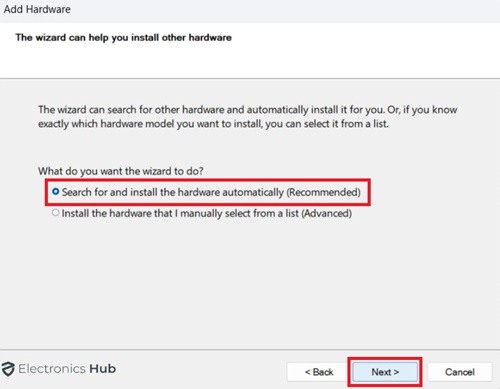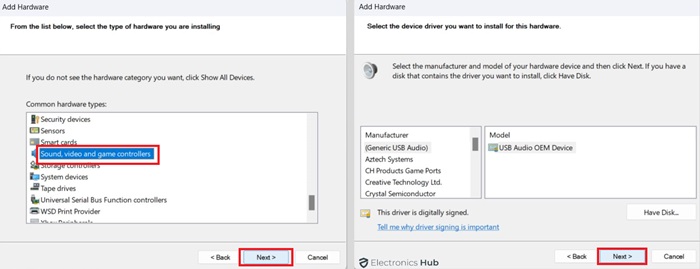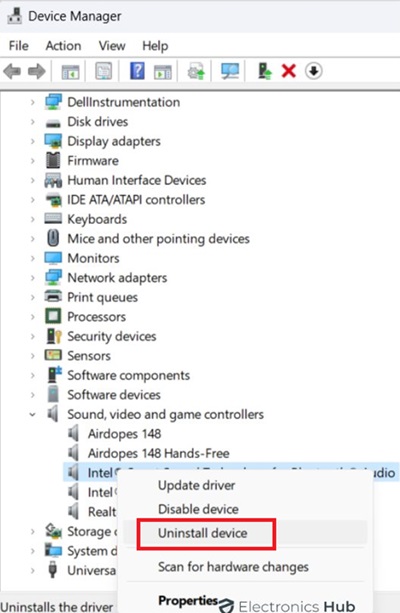The moment our computer system goes mute, we start to appreciate the importance of audio output. Without audio, we cannot enjoy our favorite shows or movies on Windows-operated devices. The first response to the audio-related problem is turning up the volume or unmuting your system. But sometimes, the system shows a “no audio output device is installed” error.
This error might be confusing at first glance since your system does have various audio output devices. Whenever problems with the audio hardware, driver, or other components arise, the system will display this error message. Fortunately, this is one of the most common errors that happens on Windows operating systems. This article will guide you through several methods to identify and fix this error.
Outline
ToggleWhat Causes The “No Audio Output Device Is Installed” Error On Windows?
Before we could fix the issues with audio output, it became crucial to identify the problem. Various reasons contribute to the audio output device error. The error can occur when the system, corruption of the audio driver , and many other reasons do not detect audio components. We will discuss various reasons or factors which cause this audio driver error on Windows.
Also Check:
Latest Windows Update
Installing the latest Windows update always increases the performance of your system, right? Well, sometimes, the latest Windows update includes major features that might interfere with the audio output drivers or settings. Updating might resolve the previous bugs but also gives birth to unsolved bugs. As a result, your system will start displaying the error after installing a major Windows update.
Outdated Or Damaged Audio Drivers
Audio drivers are the backbone of communication between various audio components. If these drivers are corrupted or damaged, an error will be displayed on your screen. The interpreted communication between sound cards, speakers, and other components will prevent the system from playing audio. The drivers are corrupted or damaged by other factors like viruses, malware, bugs, etc.
Playback Device Disabled
Sometimes the problem lies with the playback device which causes errors at the user end. If the playback devices, like headphones, speakers, etc are disabled, they will not receive the audio signals from the system. The system will not recognize these playback devices and hence, the audio-output device error will be shown by the system.
Incorrect Connection of Playback Device
If not at the software level, the problems lie at the hardware level. To connect the wired devices with the system, several types of audio ports are offered. If you fail to connect these devices with their relevant ports, the system will not recognize them. It is rare to mix up the ports while connecting an audio device but similar sizes of ports can create illusions at the user level. As a result, the device itself will not be able to produce audio.
Issues With Wireless Connectivity
Wireless devices are connected to the system via technologies like Bluetooth, etc. Sometimes, issues with the drivers of connection of Bluetooth cause trouble in connecting the wireless device. The system will recognize the devices but fails to establish a connection with them. As a result, the audio output device error will be shown. Other issues like incorrect pairing of the wireless device will also cause similar errors.
Fixing The “No Audio Output Device is Installed” Error On Windows
Now that we have identified the various factors that cause the audio output eros, it will be easy to fix the issue. We have explained various solutions to fix this error to help you enjoy your favorite content with audio.
Restarting The System
The most basic yet effective process of facing any errors on Windows is to restart the system. By restarting the system, the Windows operating system creates a fresh starting point for all the tasks. This helps in removing error-causing settings, bugs, or processes. To restart your system, simply press the CTRL and F4 keys. From the new window, click on the drop-down menu and select the Restart option. Your system will perform a reboot and solve the audio output device error.
Inspect External Connections
If you suspect that the headphone’s connector is not plugged into the right port, a simple inspection might save you from wasting time. Simply check the ports of your system where the audio device is connected. If the device is not connected to the right port, plug it into the right one. If the connector is plugged into the right port, you can remove it and insert it again. Besides this, if you are using an extension or convertor, check if the connection is done properly or not.
Launch The Audio Troubleshooter
To deal with audio-related issues, Windows features a dedicated Audio Troubleshooter. It helps in detecting the problem with audio devices and offers the best solution for those issues. To access the Audio Troubleshooter, you can follow these steps:
- On the right section of the Taskbar, locate the Volume icon and right-click on it
- From the list of various options, select the “Troubleshoot Sound Problems” option
- Depending on your admin privileges, you will need to confirm the launch of Audio Troubleshooter
- If the system detects multiple audio devices, you will need to select an individual device to troubleshoot and proceed by clicking Next
- The Audio Troubleshooter will run a scan to detect any issues with audio output, If found, it will fix them with necessary actions
Reconnect External Output Devices
If the external output devices have lost connectivity accidentally or due to issues, you can reconnect them. If wired devices are not connected, you can disconnect them from the respective ports. Again plug them into their ports and check if the audio device is detected or not. Similarly, wireless devices can be disconnected by turning off their Bluetooth. Again establish the Bluetooth connectivity and pair the device to solve the audio output device error.
Updating The Audio Drivers
- Launch the Power Menu by pressing the Windows and X keys together
- From the list of various options, locate and click on the Device Manager
- A list of various components will load on the screen. Select the arrow next to the “Sound, video, and game controller” option
- The expanded menu will show all the available audio output devices on your system
- Right-click on the device name whose drivers need to be updated. Click on the “update driver” option
- Select the “search automatically for driver” options and follow the on-screen steps to update the audio drivers
- Restart your system and check if the error has been resolved or not
Launch The Legacy Hardware Option
If you are using older audio devices, compatibility issues cause errors on the new version of Windows. The Legacy Hardware driver helps in solving this issue by offering compatible drivers for older devices. These drivers are included in the new version of Windows and hence easy to access.
- You have to launch the Power Menu by pressing the Windows and X keys together
- From the list of various options, click on the Device Manager option
- Locate the “Sound, video and game controller” option and click on the arrow next to it
- The expanded menu will show all the available audio output devices on your system
- Right-click on the device name that will need the Legacy Hardware driver
- On the top side, click on the Action option and then select the “Add legacy hardware” option
- The Add Hardware Wizard will open where you have to click on the Next option
- Choose the “search for and install hardware automatically” option and confirm the process by clicking Next
- You can add the hardware model on the next page.
- Again locate and click on the “sound, video and game controller” option and choose the “Next” option
- Enter the manufacturer and model number and then choose the Next option. The process will end after clicking on the Finish option
- The audio device will be added to the Device Manager
- Visit the Device Manager locate the activated audio device and enable it
Uninstalling The Audio Driver
You can remove the Audio Drivers of an audio device to automatically get a stable version of the drive,
- Open the Device Manager by searching it in the apps menu or via the Power Menu
- Under the “Sound, video and game controller” option, locate the audio device you want to uninstall
- Right-click on the device name and select the “Delete” option
- The system will display a warning message on your screen. Confirm the removal process by clicking on the Uninstall option.
- At the same time, locate the device name under the “Audio Inputs And Outputs” section and right-click on its name
- Select the Uninstall Device option and confirm it
- The changes will take place after rebooting the system. The system will automatically install the latest version of the audio drives for the selected device
Update Windows
Updating Windows will solve any bug related to the audio output.
- Press the Windows and I keys together to open the Windows Settings
- Click on the Update and Security option
- In the Windows Update section, check if a new version is available
- If yes, click on the download and install option
- The latest update of Window will be installed and the system will reboot
Disable The Sound Card
- Open the Device Manager via the Power Menu or Apps list
- Locate the “sound, video, and game controller” option and expand the arrow next to it
- Right-click on the sound card name and select the Disable option
- wait for a moment and then right-click on the sound card name
- select the Enable option and reboot your system
If the solution fails to work, chances are that the sound card is damaged. Inspect the sound card for external damages and replace it with a new one.
Contact Technical Support
If all the specified solutions fail to solve the error, it will be better for you to seek professional help. You can directly contact the technical support of your system’s manufacturer. Depending on the mode of contact, you can get instant solutions from the technical team. For the majority of the time, the issues are solved after contacting technical support. You can also book a visit to the service center after discussing the issue with the technical team.
No Audio Device Installed on Windows – FAQs
Ans: In simple words, this error tells the user that the system is not able to detect any audio device to play audio. The devices may range from speakers to headphones. Various factors can affect the working of audio transfer between the audio components of Windows systems. The reasons range from outdated audio drivers to physical damage to the components.
Ans: If you have updated the audio drivers and still getting the error message, you can select alternative methods. Uninstall the drivers for the selected audio device from the system via Device Manager. After this process, restart the system, and the system will install the latest audio drivers for the same device.
Ans: If your system’s audio drivers are corrupted or outdated, you can either repair them or update them. By visiting the Device Manager, you can right-click on the concerned audio device name. Select the Update Driver option and the audio driver for that device will be updated to the latest version. The updating process will also repair the corrupted drivers.
Ans: You can inspect the connectivity at both the hardware and software level. Check if the system detects the connected audio device under the volume icon. Perform a visual inspection of the ports and the connectors of audio devices. You can also check if the wireless devices are paired correctly with the system or not.
Ans: To prevent the error from happening in the future, you can follow several precautions. Keep your operating system and drivers up to date. While downloading and installing third-party software, make sure they belong to a trusted source. This helps in preventing virus or malware attacks. Similarly, you can regularly back up the system to keep a restore point ready for extreme cases.
Conclusion
Audio can create a headache for you in both conditions: extreme volumes and total mute conditions. Errors create hurdles in experiencing the audio from your favorite content. Windows might be a robust system but the “no audio output device is installed” error sometimes interrupts your enjoyment. In this article, we have discussed the root cause of this error. We have also gone through many solutions to make sure you get the best audio experience from your Windows device.

